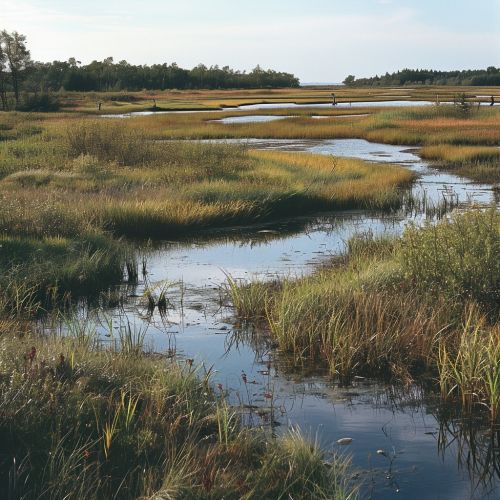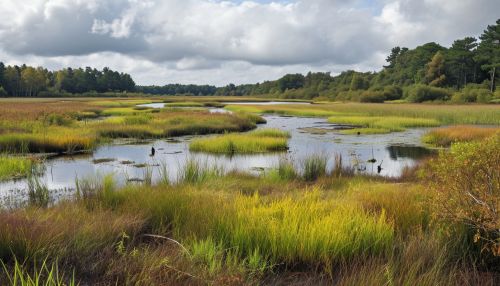Wetland Ecology
Introduction
Wetland ecology is the study of the interactions between organisms and their wetland environment. Wetlands are unique ecosystems characterized by their waterlogged soils and vegetation adapted to saturated conditions. They provide critical habitat for a diverse array of plant and animal species, and perform important ecological functions such as water filtration, flood control, and carbon sequestration.
Wetland Types
There are various types of wetlands, each with its own unique characteristics and ecological processes. These include marshes, swamps, bogs, and fens. Marshes are typically dominated by herbaceous plants, while swamps are characterized by the presence of trees and shrubs. Bogs are acidic wetlands with a thick layer of peat, while fens are alkaline or neutral wetlands fed by mineral-rich groundwater.


Wetland Hydrology
The hydrology of a wetland is a key determinant of its ecology. Wetlands are typically characterized by the presence of water at or near the surface of the soil for a significant portion of the year. This creates anaerobic conditions that influence the types of plants and animals that can survive in these environments. The source of water, whether it be from precipitation, groundwater, or surface water, can also influence the chemistry and biology of the wetland.
Wetland Soils
Hydric soils are a defining characteristic of wetlands. These soils are formed under conditions of saturation, flooding, or ponding, which leads to the development of anaerobic conditions in the upper part. Hydric soils can vary greatly in their physical and chemical properties, but they typically have a high organic matter content and are often dark in color.
Wetland Vegetation
Wetlands support a diverse array of plant species, many of which are specially adapted to survive in waterlogged conditions. These include emergent plants such as cattails and bulrushes, submerged plants like eelgrass and pondweed, and floating plants such as duckweed and water lilies. The composition of wetland vegetation can greatly influence the structure and function of the wetland ecosystem.
Wetland Wildlife
Wetlands are critical habitats for a wide variety of wildlife species. They provide breeding grounds for many species of birds, serve as nurseries for fish and shellfish, and support a diverse array of invertebrates. Wetlands are also home to many species of mammals, reptiles, and amphibians. The diversity and abundance of wildlife in wetlands is a reflection of the productivity and complexity of these ecosystems.
Wetland Functions and Services
Wetlands perform a number of important ecological functions and provide many services to humans. These include water filtration, flood control, shoreline stabilization, and carbon sequestration. Wetlands also provide recreational opportunities and support commercial activities such as fishing and hunting. The value of these ecosystem services is often underestimated, but they are critical to human well-being and the health of the planet.
Wetland Conservation
Despite their ecological importance, wetlands have been heavily impacted by human activities. Drainage for agriculture and development, pollution, and climate change are all major threats to wetlands. Conservation efforts are therefore critical to protect these valuable ecosystems. These can include legal protections, restoration efforts, and the promotion of sustainable land use practices.
